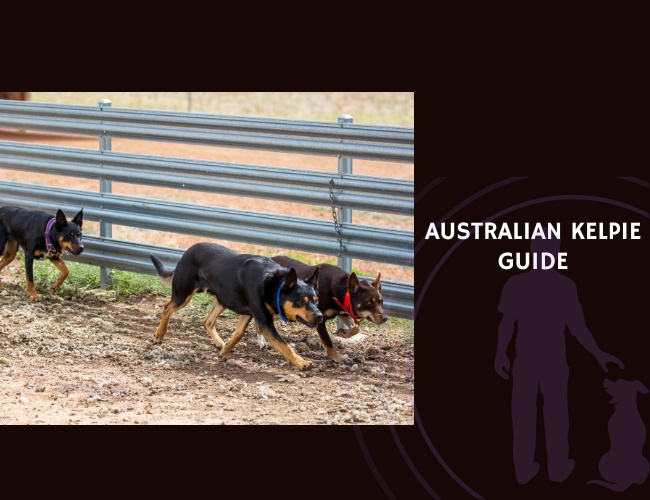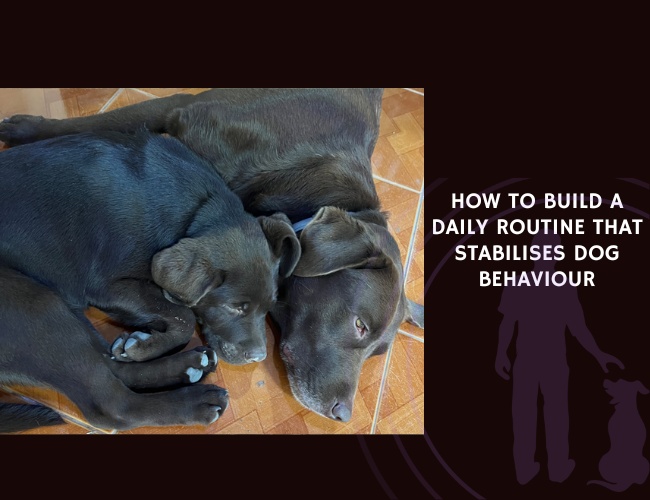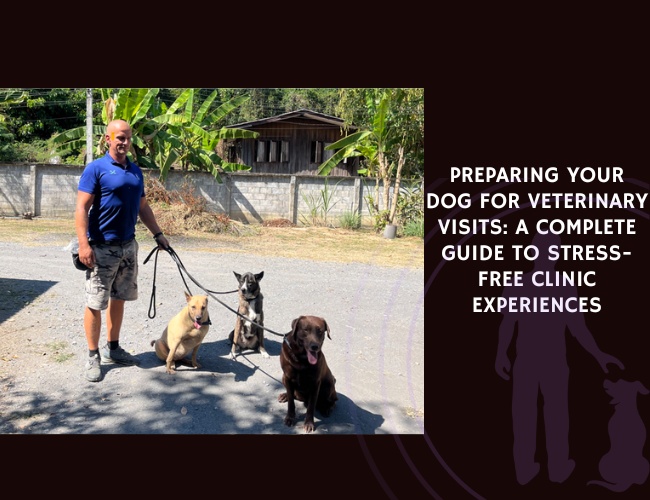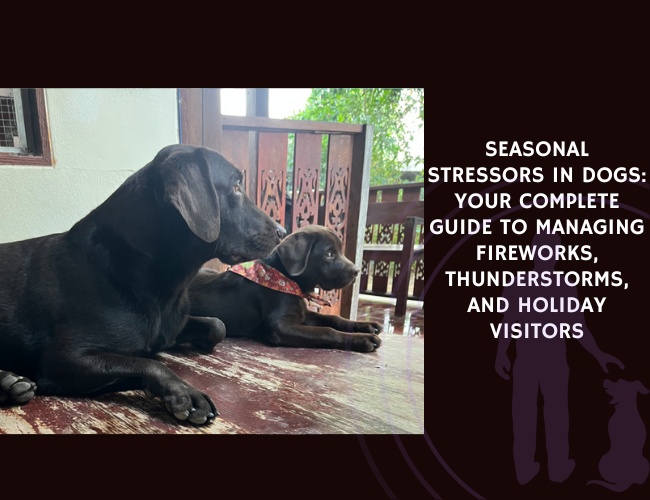Introduction: Meeting Australia’s Tireless Wonder
Picture this: across the vast, sun-scorched expanses of the Australian outback, a medium-sized dog moves with liquid grace, managing thousands of sheep with an intelligence that seems almost supernatural. This is the Australian Kelpie—a breed that transformed Australian agriculture and continues to captivate dog enthusiasts worldwide with their extraordinary capabilities and unwavering dedication.
Born from necessity in the harsh Australian landscape of the late 1800s, the Kelpie emerged when Scottish Collies met the demanding reality of managing massive sheep stations spanning thousands of acres. What resulted was nothing short of remarkable: a dog capable of working 14-hour days in scorching heat, thinking independently, and forming bonds so deep that they’d become legendary. Did you know that a single Kelpie can manage over 1,000 sheep across terrain that would exhaust most working breeds? This isn’t just a dog—it’s a testament to selective breeding at its finest.
Whether you’re considering welcoming a Kelpie into your active family, curious about transitioning a working dog to companion life, or simply fascinated by one of the world’s most capable herding breeds, let us guide you through everything you need to know about these remarkable dogs. From their intense work ethic to their surprising tenderness with family, we’ll explore what makes the Australian Kelpie truly special. 🧡
Character & Behavior: Understanding Your Kelpie’s Inner World
The Working Heritage That Shapes Everything
Your Australian Kelpie carries within them over a century of purposeful breeding—and you’ll notice this heritage in nearly everything they do. These dogs weren’t developed in comfortable kennels but rather forged in the crucible of Australia’s toughest working conditions. The foundation bitch “Kelpie,” who won Australia’s first sheepdog trial in 1872, gave her name to a breed that would revolutionize livestock management across the continent.
What does this mean for you as an owner? Your Kelpie thinks differently than most dogs. Where a Golden Retriever might look to you for constant approval, your Kelpie assesses situations independently, makes decisions, and acts with a confidence that can be both breathtaking and occasionally challenging. They possess what handlers lovingly call “thinking stock sense”—an almost mystical ability to read situations and anticipate problems before they occur.
This independence isn’t stubbornness (though it might feel that way when your Kelpie decides the optimal walking route differs from yours!). Instead, it’s the echo of generations bred to work vast properties with minimal human supervision. Understanding this helps explain why your Kelpie might seem aloof with strangers while shadowing you devotedly around the house—they’re selective with their loyalty, but once given, it’s absolute.
Temperament Variations: Working Line vs. Show Line
Not all Kelpies are created equal, and understanding your dog’s lineage helps predict their behavioral tendencies. Working-line Kelpies maintain that intense focus and slight reserve that makes them exceptional stock dogs. They bond powerfully with their primary person but might politely ignore your dinner guests—and that’s perfectly normal for them.
Show-bred Kelpies, while retaining the breed’s sharp intelligence, typically display more social flexibility. They’re often more tolerant of handling, adapt better to suburban environments, and show less intensity in their working drive. Think of it as the difference between a Formula 1 race car and a high-performance sports sedan—both impressive, but suited to different lifestyles.
You might notice your working-line Kelpie demonstrating what we call “environmental scanning”—constantly monitoring their surroundings for changes, potential threats, or (in their mind) sheep that need herding. This hypervigilance, while excellent for farm work, means they need help learning to relax in busy environments. 🧠
The Cognitive Powerhouse in Your Living Room
Let’s talk about intelligence—because your Kelpie’s mental capacity might actually surprise you. Research places them on par with Border Collies for raw intelligence, but with a crucial difference: Kelpies are independent thinkers. While a Border Collie might await your next command eagerly, your Kelpie has already assessed the situation, formulated three possible solutions, and chosen the most efficient one.
This manifests in fascinating ways. You might find your Kelpie:
- Opening door handles they’ve watched you use
- Creating their own games when bored
- Problem-solving in ways you didn’t teach them
- Remembering individual people and animals across seasons
Their famous ability to “back” sheep—running across the backs of densely packed animals—wasn’t taught by humans. Kelpies developed this technique independently, showcasing their remarkable innovation capacity. In your home, this same innovative thinking might lead to your Kelpie figuring out how to open the treat cabinet or creating elaborate games with their toys.
Managing the Herding Drive in Modern Life
That intense stare your Kelpie gives the neighbor’s cat? The way they position themselves to monitor all family members during movie night? These are manifestations of a herding instinct so deeply embedded it emerges as early as 8 weeks old. This isn’t a behavior to eliminate—it’s a fundamental part of who your Kelpie is.
In family settings, this herding drive often redirects toward:
- Children (gentle heel nipping, circling during play)
- Other pets (attempting to control their movements)
- Even vehicles (chasing cars or bicycles)
The key isn’t suppression but redirection. Providing appropriate outlets—whether through herding balls, agility training, or structured games—channels these instincts productively. Remember, when your Kelpie tries to herd your kids to the dinner table, they’re not being naughty—they’re being helpful in the only way their genetics know how! 😄

Training & Education: Unlocking Your Kelpie’s Potential
Early Socialization: Building Confidence Without Overwhelming
The socialization window for your Australian Kelpie (3-14 weeks) requires a delicate balance—exposing them to diverse experiences while respecting their naturally reserved nature. Unlike naturally social breeds, Kelpies need thoughtful introduction to new stimuli rather than overwhelming exposure.
Weeks 3-8: Focus on gentle handling by different people, various surfaces underfoot, and household sounds. Your puppy is learning that the world, while sometimes unpredictable, is generally safe.
Weeks 9-12: This critical period shapes your Kelpie’s future comfort with strangers, other animals, and novel situations. Short, positive exposures work better than lengthy interactions. Quality over quantity is your mantra here.
Weeks 13-16: Consolidation time! Practice veterinary handling, grooming, and car rides. If your Kelpie will be a working dog, introduce controlled livestock exposure now.
Remember, your Kelpie’s reserve with strangers isn’t a socialization failure—it’s breed-typical behavior. Aim for neutral to positive associations rather than forcing friendliness.
The LIMA Approach: Why Positive Methods Excel
Forget dominance-based training—your intelligent Kelpie responds best to methods that engage their problem-solving abilities. The LIMA (Least Intrusive, Minimally Aversive) approach works brilliantly because it respects your dog’s intelligence while establishing clear boundaries.
Short, varied sessions keep your Kelpie engaged. Five minutes of focused training beats thirty minutes of repetition every time. Mix obedience with tricks, agility with scent work—variety prevents boredom in these quick-learning dogs.
Life rewards often trump treats for working-line Kelpies. Access to work (throwing the ball), play (tug games), or exploration (sniff walks) can be more motivating than food. Discover what makes your individual dog’s eyes light up and use it strategically.
Building Rock-Solid Recall Despite High Prey Drive
Achieving reliable recall with a breed designed to work independently requires strategy and patience. Your Kelpie’s recall training should follow this progression:
- Name recognition in zero-distraction environments
- Short-distance recalls with high-value rewards
- Gradually increasing distance and mild distractions
- Proofing around specific triggers (wildlife, livestock, vehicles)
- Maintenance with variable reinforcement for life
The “Premack Principle” becomes your secret weapon—use the opportunity to return to desired activities as recall reinforcement. Call your Kelpie away from investigating something interesting, reward the recall, then release them back to investigate. This teaches that coming to you doesn’t end the fun!
Channeling Drive Into Dog Sports
Your Kelpie’s working heritage makes them naturals at numerous dog sports. Consider these outlets for their physical and mental energy:
Agility: Those powerful hindquarters and tight turning ability give Kelpies natural advantages. Their independence might require modified handling strategies, but their speed and precision are unmatched.
Herding Trials: Even companion Kelpies often retain strong herding instincts. Herding trials provide the ultimate breed-appropriate outlet, satisfying deep genetic drives.
Flyball: Speed, ball drive, and competitive spirit make Kelpies flyball stars. Their slightly smaller size compared to Border Collies can advantage them in box turns.
Scent Work: Surprisingly, many Kelpies excel at detection work. Their focus and problem-solving abilities translate beautifully to scent discrimination tasks.
Nutritional Recommendations: Fueling Your Athlete
The Working Dog’s Diet Demands
Whether your Kelpie works stock or works on wearing out tennis balls, their nutritional needs reflect their high-octane lifestyle. These aren’t couch potatoes—even companion Kelpies often require 1.5-2 times the calories of similarly-sized sedentary breeds.
Optimal macronutrient distribution for your active Kelpie includes:
- Protein: 28-32% (high-quality animal sources)
- Fat: 18-22% (sustained energy for endurance)
- Carbohydrates: 30-40% (complex carbs for steady fuel)
Timing matters tremendously. Feed a small portion (25% of daily intake) 3-4 hours before intense activity, with the remainder after a proper cool-down period. This prevents dangerous gastric torsion while maintaining energy availability when your dog needs it most.
Joint Support: An Investment, Not an Option
Your Kelpie’s athletic lifestyle demands proactive joint care from puppyhood through their senior years. Don’t wait for problems—prevention beats treatment every time.
Essential supplements for joint health:
- Glucosamine & Chondroitin: Daily supplementation maintains cartilage health
- Omega-3 Fatty Acids: EPA and DHA reduce inflammation and support joint fluid
- Green-Lipped Mussel Extract: Unique compounds provide synergistic joint benefits
- MSM: Supports collagen synthesis and shows anti-inflammatory properties
Young Kelpies benefit from controlled growth rates—consider large-breed puppy formulas despite their medium size, as working lines often show rapid growth that can stress developing joints.
Life Stage Nutrition: Adapting to Changing Needs
Puppy Stage (0-12 months): Your Kelpie puppy needs careful nutritional management supporting steady growth without excessive speed. Four meals daily at 8 weeks decreases to two by 6 months. Energy requirements peak at 4-6 months—they might eat more than adult dogs despite weighing less!
Adult Stage (1-8 years): Activity level drives everything here. Your weekend warrior Kelpie needs different nutrition than a full-time working dog. Body condition scoring should guide feeding amounts rather than package recommendations—every Kelpie is unique.
Senior Stage (8+ years): Unlike many breeds, senior Kelpies often maintain impressive activity levels. Adjust nutrition based on individual needs:
- Increased protein quality maintains muscle mass
- Enhanced antioxidants combat age-related stress
- Joint supplements become non-negotiable
- Cognitive support through omega-3s keeps minds sharp
Tireless. Independent. Devoted.
Heritage drives instinct. Forged in Australia’s demanding outback, Kelpies inherited endurance, problem-solving, and unmatched stock sense. Their behavior today echoes generations of dogs bred to manage thousands of sheep alone.
Independence defines thinking. Unlike breeds that crave constant approval, Kelpies make confident, situational decisions. This autonomy can feel challenging, but it reflects purposeful breeding for self-reliance and intelligent work.
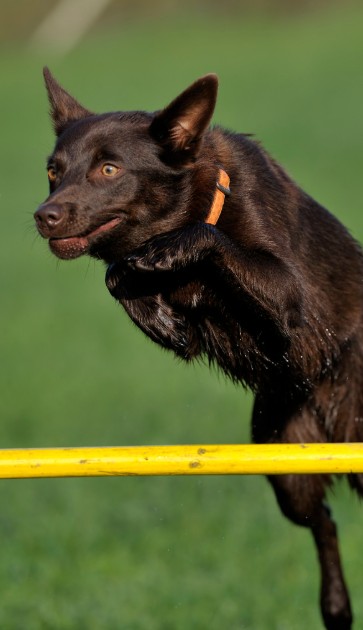
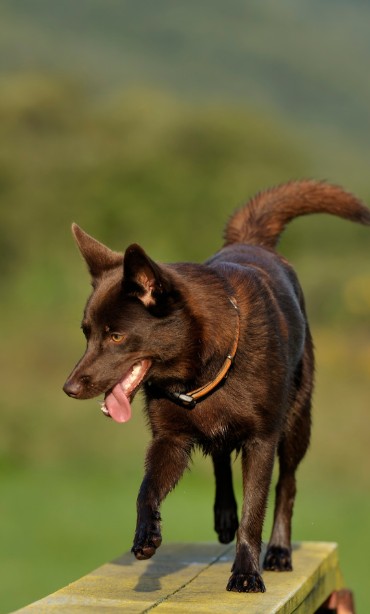
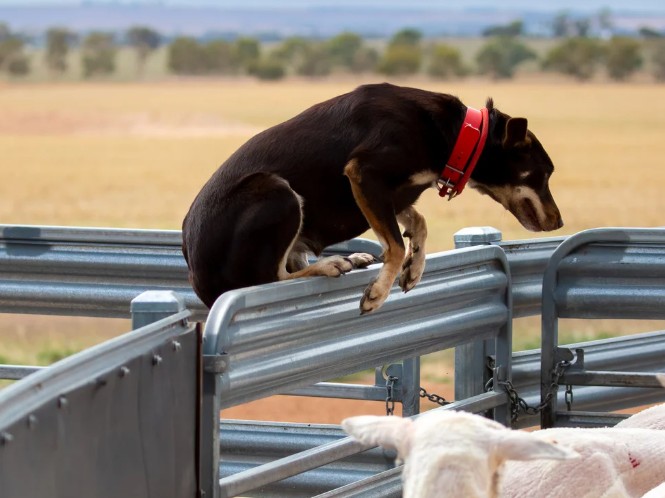
Loyalty runs deep. Though reserved with strangers, once bonded, a Kelpie offers absolute devotion. Their selective trust transforms into unwavering companionship, blending working grit with surprising tenderness at home.
Health Concerns: Protecting Your Kelpie’s Wellbeing
Genetic Considerations: What Testing Tells Us
Australian Kelpies enjoy relatively robust genetic health compared to many purebreds, but several conditions warrant attention and screening.
Collie Eye Anomaly (CEA) affects 5-10% of working lines as carriers. Despite the name suggesting Collie-specific issues, Kelpies can carry this gene. Annual eye exams for breeding stock and genetic testing help identify carriers before problems arise.
Progressive Retinal Atrophy (PRA) causes gradual vision loss, typically beginning in middle age. With carrier rates around 8-12%, DNA testing becomes crucial for breeding decisions. Affected dogs can still live full lives with environmental management.
Cerebellar Abiotrophy (CA) appears rarely but devastatingly, causing progressive coordination loss in young puppies. The recessive inheritance pattern makes DNA testing essential for breeding programs—carriers show no symptoms but can produce affected puppies when bred together.
Orthopedic Health: Protecting Those Athletic Joints
Hip Dysplasia affects 6-8% of Kelpies—lower than many breeds but still significant. Working lines often show better statistics, possibly due to natural selection for sound structure. Environmental factors matter enormously:
- Maintain lean body condition throughout life
- Avoid excessive jumping before 12 months
- Provide appropriate surfaces for exercise
- Support with preventive supplementation
Cruciate Ligament Injuries represent a moderate risk, particularly in dogs over 5 years doing high-impact activities. Those lightning-fast turns and sudden stops that make Kelpies exceptional workers also stress their ligaments. Prevention focuses on conditioning, warm-ups, and maintaining healthy weight.
Longevity Insights: Helping Your Kelpie Thrive
Here’s something remarkable: Australian Kelpies often live 12-15 years, with many working dogs paradoxically outliving their companion counterparts. Why? Purpose and fitness matter more than ease.
Factors supporting exceptional longevity:
- Maintained lean body condition (even slight excess weight stresses joints)
- Continued mental stimulation into senior years
- Regular veterinary care catching issues early
- Appropriate exercise adapted to aging bodies
- Strong human bonds providing emotional wellbeing
Studies show 25% of working Kelpies live beyond 16 years—testament to their robust constitution when needs are met properly. 🧡
Lifestyle & Environment: Creating Your Kelpie’s Best Life
Exercise Requirements: More Than Just Physical
Let’s be crystal clear: Australian Kelpies need extraordinary amounts of both physical and mental stimulation. This isn’t negotiable—it’s biological necessity.
Minimum daily requirements for adult Kelpies:
- 2-3 hours varied activity (not just backyard time)
- 60+ minutes high-intensity exercise (running, fetch, agility)
- 30-60 minutes training or problem-solving
- Environmental enrichment and novel experiences
But here’s the crucial part: quality matters more than quantity. Three hours of repetitive fetch might exhaust your Kelpie’s body while ramping up their arousal levels, creating a cycle of increasing exercise needs. Instead, combine physical exercise with mental challenges—tracking games, puzzle toys, training sessions—for complete satisfaction.
The Working-to-Companion Transition
Successfully transitioning a working-bred Kelpie to suburban life requires understanding and creativity. You’re essentially asking a Formula 1 car to navigate suburban streets—possible, but requiring significant adaptation.
Key strategies for success:
- Create job-like structures: Morning “work” sessions replace stock checking
- Provide purposeful activities: Dog sports give meaning to their drive
- Respect their nature: Don’t expect Golden Retriever sociability
- Build predictable routines: Structure reduces anxiety about environment
Many successful companion Kelpies participate in multiple activities—agility on Tuesdays, hiking on Thursdays, trick training on weekends. This variety satisfies their need for mental stimulation while providing the physical outlet their bodies crave.
Climate Adaptability: From Outback to Arctic
Your Kelpie’s Australian heritage provides remarkable heat tolerance—they can work in temperatures exceeding 40°C (104°F) when properly supported. However, this doesn’t mean leaving them in hot cars or yards without shade and water!
Heat management strategies:
- Provide water access every 20-30 minutes during activity
- Exercise during cooler hours in summer
- Watch for excessive panting or stumbling (heat stress signs)
- Consider cooling vests for extreme conditions
Surprisingly, Kelpies adapt well to cold climates too. Their double coat insulates to about -10°C when dry, though wet conditions significantly reduce protection. Cold-climate Kelpies might need 50% more calories to maintain body temperature during winter work.
Family Integration: Making It Work
Australian Kelpies can become exceptional family dogs when their needs are understood and met. Success depends on honest assessment and proper management.
With children: Kelpies often excel with kids when raised together, showing protective, gentle behaviors. However, expect:
- Herding attempts (heel nipping, circling)
- Stress from unpredictable child behavior
- Need for supervised interactions initially
Teaching children to respect the dog’s space and providing your Kelpie with kid-free retreat zones prevents most issues. Kelpies raised with children from puppyhood show better adaptation than adult adoptions.
Multi-pet households: Your Kelpie might attempt to manage other pets’ movements—this is herding, not aggression, but can cause conflicts with dominant dogs. Cat relationships require careful introduction and management, as prey drive varies individually.
The Ideal Kelpie Owner: An Honest Assessment
Before welcoming a Kelpie into your life, honestly evaluate whether you can meet their substantial needs.
You’ll thrive with a Kelpie if you:
- Lead an active lifestyle and enjoy outdoor adventures
- Have 3-4 hours daily for dog-focused activities
- Enjoy training and developing new skills
- Appreciate independent thinking in dogs
- Can maintain consistency despite their intensity
- Have secure fencing and space for exercise
You might struggle if you:
- Prefer calm, low-maintenance companions
- Work long hours away from home
- Want a naturally social, everyone’s-friend dog
- Have mobility limitations preventing active exercise
- Live in apartments with noise restrictions
- Expect immediate, unquestioning obedience
Senior Care: Honoring Your Aging Athlete
Adapting Exercise for Aging Bodies
Your senior Kelpie’s spirit might write checks their body can’t quite cash anymore. The dog who once worked 14-hour days might now need modified exercise that respects aging joints while maintaining mental stimulation.
Exercise modifications for seniors:
- Swimming provides low-impact cardio
- Shorter, more frequent walks replace long hikes
- Mental games compensate for reduced physical activity
- Gentle stretching maintains flexibility
- Warm-up periods before activity become essential
Watch for subtle signs of discomfort—Kelpies often hide pain stoically. Reluctance to jump, stiffness after rest, or behavior changes might indicate arthritis or other age-related conditions requiring veterinary attention.
Cognitive Health: Keeping Minds Sharp
Mental decline isn’t inevitable—many Kelpies maintain sharp minds into their late teens with proper support. Cognitive enrichment becomes even more crucial as physical abilities decline.
Brain-healthy activities:
- Learning new tricks (yes, even at 14!)
- Puzzle feeders and problem-solving games
- Scent work adapted to mobility levels
- Social interaction with familiar friends
- Routine variation preventing mental stagnation
Supplements like omega-3 fatty acids, antioxidants, and potentially MCT oil support cognitive function. Regular veterinary check-ups help distinguish normal aging from treatable conditions affecting mentation.
Conclusion: Is the Australian Kelpie Right for You?
The Australian Kelpie isn’t just a dog—they’re a lifestyle choice, a commitment to active partnership, and an invitation to experience canine capability at its finest. These remarkable dogs, forged in the harsh Australian outback, offer unparalleled loyalty, intelligence, and work ethic to those who can meet their substantial needs.
If you’re seeking a calm, low-maintenance companion who’s happy with brief daily walks, the Kelpie isn’t your match. But if you’re ready for adventure, if you thrive on challenge, if you want a partner rather than just a pet—the Australian Kelpie might just transform your life the way they transformed Australian agriculture.
These dogs teach us about dedication, about the satisfaction of hard work, about bonds that transcend species. They remind us that some of life’s greatest rewards come not from ease but from rising to meet extraordinary demands. Your Kelpie won’t just be part of your life; they’ll reshape it around shared adventures, mutual respect, and the deep satisfaction of partnership with one of the world’s most capable canines.
Whether herding sheep across vast stations or herding tennis balls in suburban backyards, whether competing in international agility trials or simply being the world’s most dedicated running partner, the Australian Kelpie brings intensity, intelligence, and devotion that few breeds can match. For the right owner—active, dedicated, and ready for the challenge—life with a Kelpie becomes an adventure you’ll treasure for their impressive 12-15+ year lifespan.
Are you ready to match the energy, intelligence, and heart of Australia’s remarkable working wonder? Your future Kelpie is waiting to show you just how extraordinary the human-canine bond can be. 🐾🧡

